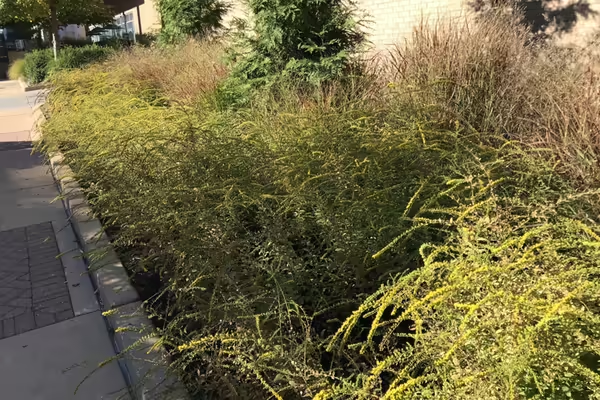
URBANA, Ill. — Summer can be a scorcher, but by selecting the right plants, a landscape can still look sultry all summer long.
Both trialed and native plants can tolerate the heat. Trial plants are evaluated throughout the season for heat tolerance and can be planted in the ground or containers. Growers can learn what worked well and what didn’t based on the previous season through the research of others. Native plants are known to tolerate the heat of Illinois summers. Changes to the seasons as the years go by also influence what can potentially be grown in Illinois, as recently seen with last year’s USDA hardiness zone map update and shift in zones.
Factors Impacting Plant Selection
Some plants may start out spectacular, but fade and whither under the intense heat, so be cautious in site and plant pairing selection. A good resource to check out when selecting plants is the American Horticultural Society Heat Zone Map. Plants that have similar watering needs will be easier to manage. Irrigation needs will vary as the amount of rainfall fluctuates.
Mulching plants is also an option to conserve moisture, especially when the soil is dry. Mulch must be kept away from the crowns of woody plants. Apply mulch in a 2-inch layer.
Location can influence the temperature in the garden. Areas near hardscapes, such as driveways, are generally warmer, and wind also adds to the dryness of a site. If a location needs alterations, consider adding shade structures to help modify the conditions and assist with plant growth.
Finally, take time to research the requirements and culture of all the plants chosen to grow.
Cultivars to Beat the Heat this Summer
- Verbena ‘Superbena’ Sparkling Amethyst Improved: is an improvement in the number of blooms present in summer compared to previous cultivars that tended to melt with the heat.
- Zinnia ‘Double Zahara Fire’ performs best in full sun and thrives in the summer heat.
- Vincas Titan series is outstanding in hot and dry conditions.
- Ornamental onions or the Allium spp. vary in bloom times and height, but the Persian alliums can be showstoppers in the summer with their large heads.
- Arkansas Bluestar (Amsonia hubrichtii) has star-shaped blooms in the summer and an excellent fall color that is well adapted to summer heat and humidity.
- Catmint (Nepeta x faassenii; N. racemosa) is durable in the heat once established and is drought tolerant.
- Russian Sage (Perovskia atriplicifolia) is best planted in the spring once the soils are warm.
- Salvia ‘May Night’ thrives in hot, sunny locations. Plants may rebloom with some encouragement with watering during dry periods.
- Little Blue Stem (Schizachyrium scoparium) ‘The Blues’ is one of the most offered cultivars of this prairie grass that combines well with other plants suited for dry conditions.
- ‘Autumn Fire’ and ‘Autumn Joy’ sedum are wonderful bloomers in the summer that prefer full sun and will survive in partial shade.
- Goldenrod (Solidago spp.) ‘Fireworks’ Goldenrod is a flowering plant with yellow blooms that does best with regular moisture.
For more information on plants that beat the heat, connect with a local University of Illinois Extension county office at go.illinois.edu/ExtensionOffice.
Andrew Holsinger is a horticulture educator with Illinois Extension, serving Christian, Jersey, Macoupin, and Montgomery counties. Gardeners Corner is a quarterly newsletter from gardening experts around the state. Each issue highlights best practices that will make your houseplants, landscape, or garden shine in any season. Join the Gardener’s Corner email list at go.illinois.edu/GCsubscribe for direct access to timely tips.
PHOTO CAPTION: Goldenrod fireworks pair well with grasses to provide a unified bed with repetition. Photo by Andrew Holsinger, Illinois Extension.
Illinois Extension leads public outreach for University of Illinois by translating research into action plans that allow Illinois families, businesses, and community leaders to solve problems, make informed decisions, and adapt to changes and opportunities. Illinois Extension is part of the University of Illinois Urbana-Champaign College of Agricultural, Consumer and Environmental Sciences.